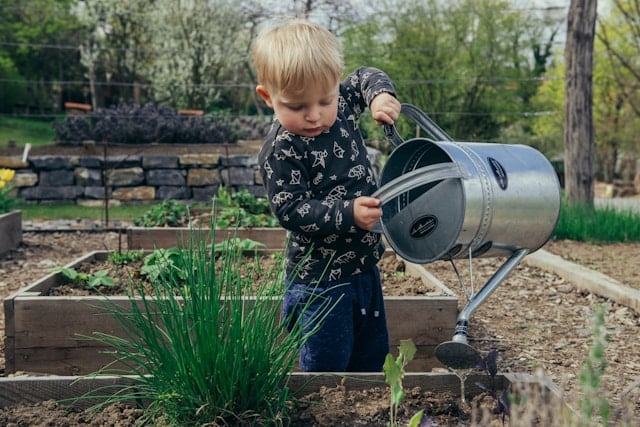What’s the Most Effective Layout for a Vegetable Garden in a Shady Backyard?

If you’ve been grappling with the challenge of growing a vegetable garden in a shady backyard, then this guide is specially designed for you. We understand how frustrating it can be trying to grow vegetables without the luxury of basking in the sun’s warm and nurturing rays. But don’t let that discourage you. Even in the most shaded spaces, there’s a way to bring life and vibrancy through a well-thought-out garden layout. In this article, we’ll walk you through the best layout for a vegetable garden in a shady backyard, and the types of plants to consider, so you can reap a bountiful harvest.
Maximizing Your Space
Working with a small, shady space can seem limiting, but it doesn’t have to be. A key factor in achieving a productive vegetable garden lies in how you utilize your available space. A shady backyard can be transformed into a haven for certain types of shade-loving vegetables.
En parallèle : How to Integrate Smart Home Technology in a Home with Historical Features?
When planning your vegetable garden layout, consider using raised beds. Raised beds offer more growing space compared to traditional in-ground beds, and they warm up faster in the spring. They also provide excellent drainage, a necessary condition for healthy plant growth.
You should also consider vertical gardening. Growing plants vertically not only saves space but also allows the plants to catch more sunlight, an important consideration in a shady backyard.
Dans le meme genre : How to Optimize a Small Bathroom to Include Laundry Features Without Clutter?
Choosing the Right Vegetables
Not every vegetable thrives in full sunlight. Some vegetables even prefer a little bit of shade. The secret to a successful vegetable garden in a shaded area is knowing what to plant.
Leafy greens like spinach, kale, and lettuce are known to do well in shade, and they can be a great starting point for your garden. Root vegetables like carrots and beets can also manage with less sunlight, although they may take a little longer to mature. You could also opt for some types of peas and beans, which will tolerate partial shade.
Remember, though, that even shade-loving plants require some sunlight. The bare minimum for these plants is usually around three to four hours of sunlight a day.
Planting in the Best Way for Shade
Now that you have an idea of what vegetables to plant in your garden, it’s crucial to understand how to plant them in a way that maximizes their exposure to sunlight.
Since the sun moves from east to west, aim to plant taller crops on the northern side of your garden, so they don’t cast a shadow over the smaller ones. This arrangement ensures that all your plants get their fair share of the limited sunlight available.
In shady conditions, it’s also essential to space your plants properly. Crowded plants not only compete for sunlight but for water and nutrients as well. A trick to enhance light penetration is by incorporating light-colored mulches, such as straw. The light color reflects sunlight back onto the plant, increasing the overall light levels.
How to Nurture Your Crops in the Shade
Growing a vegetable garden in the shade requires extra care. The lower light levels mean that plants will grow more slowly and may produce smaller yields. But, with a little extra work, you can still have a successful harvest.
Firstly, it’s essential to keep your garden beds well-nourished. Because your plants will grow more slowly in the shade, they’ll need all the help they can get to thrive. Regularly feed your garden with compost or organic matter to improve soil fertility.
Watering is another crucial aspect. Shady areas tend to stay moist for longer periods, so be careful not to overwater your vegetables. Overwatering can lead to the spread of diseases and the rotting of plant roots.
Lastly, keep an eye out for pests. Shady and damp conditions can harbor slugs and snails, which can wreak havoc on your garden. Regularly check your plants, especially the undersides of leaves, and deal with any pests you find immediately.
Bringing in Tomatoes: A Turnaround
Having a shady backyard doesn’t mean you have to completely forgo growing tomatoes, a favorite in many vegetable gardens. While tomatoes typically love the sun, certain varieties can tolerate shade. Varieties like ‘Stupice’ and ‘Siberia’ can bear fruit with as little as three hours of sun a day.
When planting tomatoes in a shady garden, opt for containers or hanging baskets. This approach will allow you to move the plants around to take advantage of the limited sunlight. Also, remember to keep the soil well-drained and regularly fertilize your tomato plants for the best results.
Ultimately, the secret to successful vegetable gardening in a shady backyard lies in understanding what plants will thrive in your garden, knowing how to arrange them for maximum sun exposure, and providing them with the care they need. It may take some trial and error, but with patience and diligence, you can turn your shady backyard into a vegetable oasis.
Strategic Garden Plan: Companion Planting and Square Foot Gardening
When discussing vegetable garden ideas for shady backyards, two methods stand out: companion planting and square foot gardening. These methods, when executed well, can significantly boost the productivity of your garden.
Companion planting involves placing different types of plants together in a way that they benefit each other. Some plants can deter pests that might harm others, while others help to improve the soil’s nutrient content. In a shady garden, companion planting can help maximize the limited sunlight by pairing taller plants with shorter ones that don’t require as much light. For instance, planting lettuce (a low-growing, shade-tolerant plant) next to tomatoes (a taller plant that enjoys more sunlight) can improve garden efficiency.
On the other hand, square foot gardening is a method that maximizes space in your garden. This system divides the garden into square foot sections, each hosting a different type of plant. It’s a great way to organize your garden and ensures that each plant gets the nutrients and space it needs. In a shady backyard, you can arrange your square foot garden layout so that the taller crops are on the north side, allowing all plants to receive available sunlight.
Both methods require careful planning and a good understanding of what will grow best in your shaded garden. However, being thoughtful with your garden design can certainly lead to a fruitful growing season.
Reflecting on Your Shaded Vegetable Garden
Having a shaded backyard doesn’t mean you can’t enjoy the rewarding experience of growing your own vegetables. With careful planning, the right plant selection, and good garden practices, you can successfully maintain a thriving vegetable garden in the shade.
Raised beds and vertical gardening can help maximize your available space and the scant sunlight. Consider growing shade-tolerant vegetables like leafy greens, certain types of peas, beans, and root vegetables. Always remember to plant your crops strategically, ensuring they get their fair share of the available sunlight.
Companion planting and square foot gardening can further enhance the productivity of your garden. Regular garden care, such as regular feeding, avoiding overwatering, and vigilance against pests, is crucial in managing a shaded garden. Even tomatoes, usually a full sun vegetable, can have a place in your shady garden if you choose the right varieties and provide them with appropriate care.
There’s no one-size-fits-all garden plan for shaded backyards, so don’t hesitate to experiment with different layouts or plant types. Growing a vegetable garden in the shade might need a little more effort and patience, but the end results are worth it. Your shady backyard could soon be a vibrant, flourishing, and bountiful vegetable oasis. Be encouraged, you’ve got this!
